Discover Arles in France, a city where history, art and culture intertwine harmoniously. Situated in the heart of Provence, Arles is famous for its Roman heritage, its role in the work of Vincent van Gogh and its Camargue traditions. Here are the must-sees and activities not to be missed during your stay.
Roman Monuments Listed as UNESCO World Heritage Sites
know as "the little Rome of the Gauls", Arles boasts an exceptional collection of Roman monuments recognized as UNESCO World Heritage Sites. Here are the 8 major sites to explore:
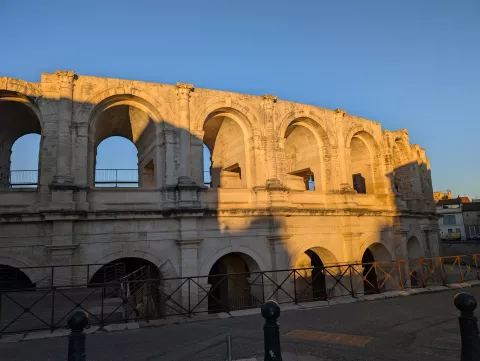
The Roman Amphitheater (Les Arènes)
Built in the 1st century AD, this amphitheater could accommodate up to 20,000 spectators. Today, it remains the cultural heart of Arles, hosting performances, bullfights, and concerts.
Address: Rond-Point des Arènes
Price: ~€10 (included in the Monuments Pass)
Recommended time: 1 hour
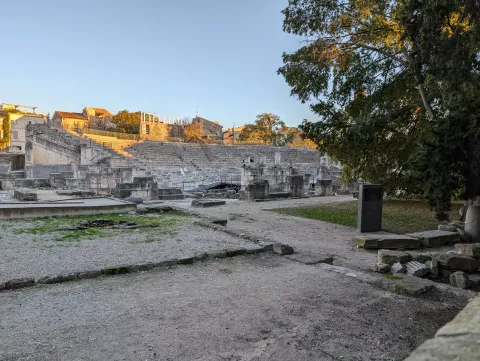
The Ancient Theater
Erected in the 1st century BC, this theater is one of the earliest Roman monuments in Arles. Once used for performances, it now hosts open-air festivals and concerts.
Address: Rue de la Calade
Price: ~€8
Recommended time: 45 minutes

The Baths of Constantine
This 4th-century thermal complex reflects the sophistication of Roman life. The well-preserved ruins highlight the grandeur of public baths in ancient times.
Address: Rue du Grand-Prieuré
Recommended time: 30 minutes
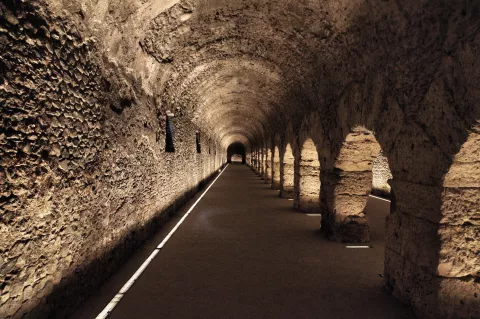
The Cryptoporticus
These underground galleries beneath the Roman forum were used to stabilize constructions and store goods. A fascinating visit to discover the architectural ingenuity of the Romans.
Address: Place du Forum
Recommended time: 30 minutes
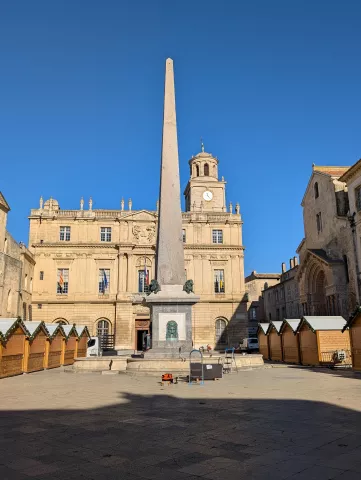
The Obelisk on Place de la République
This granite obelisk, dating back to Roman times, was re-erected in the 17th century in the center of the square. It’s an iconic landmark in the heart of the city.
Address: Place de la République
Price: Free to visit
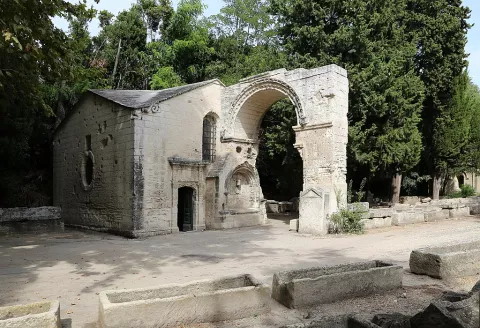
The Alyscamps
This Roman necropolis was one of the most famous burial sites in the ancient world. It was painted by Vincent van Gogh and Paul Gauguin and offers a mysterious, atmospheric stroll.
Address: Avenue des Alyscamps
Price: ~€9
Recommended time: 45 minutes
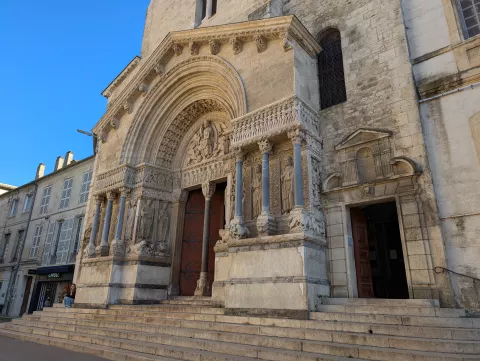
The Church and Cloister of Saint-Trophime
This Romanesque masterpiece, built in the 12th century on Roman foundations, is a must-see. The sculpted portal and cloister galleries are particularly remarkable.
Address: Place de la République
Price: ~€5 (cloister entry)
Tours and tickets to visit Arles
Contemporary Arles: A Thriving Cultural Hub
While Arles is renowned for its ancient heritage, it is also a beacon of contemporary creativity. Explore the vibrant artistic energy that animates the city:
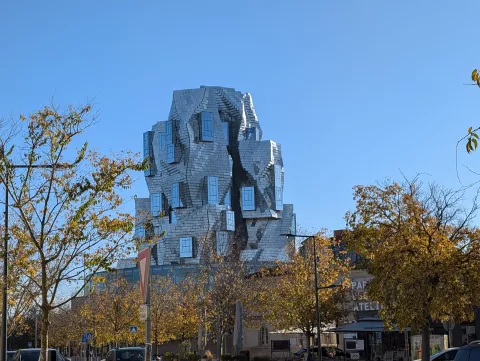
The LUMA Foundation
This revolutionary cultural space, housed in the former SNCF railway workshops, is dominated by the spectacular tower designed by Frank Gehry. Don’t Miss: Immersive art installations, contemporary exhibitions, and a vast landscaped park created by renowned artists.
Address: Parc des Ateliers, Avenue Victor Hugo
Price: ~€10 / Free for under 18s
Recommended time: 2 to 3 hours
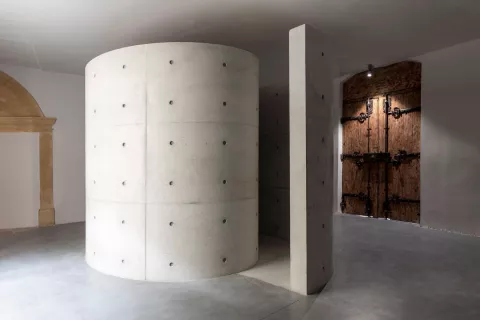
Lee Ufan Space
The famous Korean artist Lee Ufan transformed the Hôtel Vernon into a minimalist art space that celebrates light and materials. His sculptures and installations offer a unique contemplative experience.
Address: Rue de Vernon
Recommended time: 1 hour
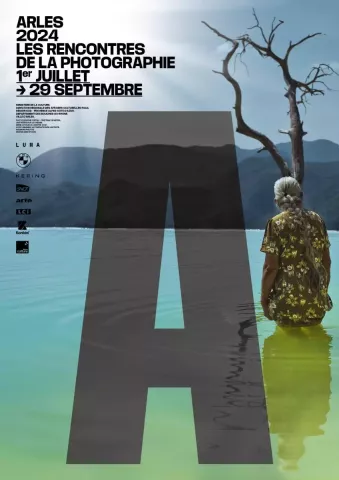
Arles Photo Festival
Since 1970, Les Rencontres d'Arles Photo Festival has turned the city into the world’s photography capital every summer. Exhibitions, outdoor screenings, workshops, and talks attract visitors from across the globe.
Dates: July - September
Address: Various locations around the city
Price: Pass from €40
Art Galleries
Arles is a paradise for contemporary art lovers. Wander through the many galleries scattered throughout the historic streets:
Actes Sud: A combined publishing house, bookshop and art gallery.
Lhoste: Contemporary art and store
Regala: Contemporary art
Anne Clergue Gallery: Featuring photography from international and local artists.
Galerie Huit Arles: Photography and contemporary art in a 17th-century mansion.
Artists’ Studios
Many artists like Formica, Reeve Schumacher have chosen Arles as their home. Some studios are open to the public, offering a glimpse into the creative process.
Follow in the footsteps of Vincent van Gogh
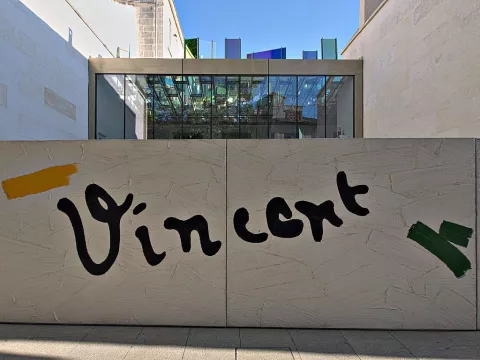
Vincent Van Gogh Foundation
Explore works of art inspired by Van Gogh's legacy and contemplate contemporary exhibitions.
Address: Rue du Dr Fanton
Price: ~€12 / adult
Recommended time: 1 to 2 hours
The Van Gogh circuit
Follow a trail through the places where Van Gogh painted his famous works, such as the Café la Nuit Place du Forum and the Espace Van Gogh, the former hospital where he was treated.
Free activity
Cultural events not to be missed
Les Rencontres d'Arles (July - September)
The International Arles Photo Festival attracting visitors from all over the world.
Feria d'Arles (Easter and September)
A traditional festival combining bullfighting, shows and festivities.
Discover the culture of Provence and the Camargue
The Camargue Museum
A few kilometres from Arles, discover the history and biodiversity of this unique region.
Price: ~€7
The Camargue Regional Nature Park
Take a trip to see pink flamingos, white horses and bulls in the wild.
Tip: Book a horse ride for an authentic experience.
Provencal markets
Visit the Arles market (Wednesday and Saturday mornings) to sample the local produce, including olives, cheese, Provencal herbs, lavender.
Stroll through the historic centre
- The Place de la République,
- The lively heart of Arles, with its majestic fountain and historic buildings,
- The Place du Forum, to see the Van Gogh Café,
- The medieval streets,
- Lose yourself in the charming little streets lined with craft shops and cafés.
Good places to eat
Take a look at our list of restaurants in Arles for a well-deserved break.
Plan Your Stay
Combine visits to the ancient heritage sites with contemporary art to enjoy a complete experience. Arles takes you on a journey through time, from antiquity to cutting-edge modernity.
Tip: Check the cultural agenda to catch temporary exhibitions and special events.